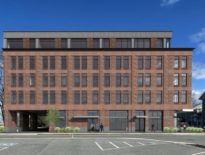
Strong demand fundamentals and easing of cost escalation are expected to stabilize Greater Boston’s multifamily construction market in 2023.
At the close of 2022, statistics on the performance of the Boston metro area multifamily housing market in the first three quarters are in, along with predictions for what’s to come next year.
Overall, 2022 was favorable for development. As reported by Multi-Housing News in late November, recent Yardi Matrix market transactions data indicated that multifamily sales volume in the region was up 9.6 percent for a total of $3 billion – the best first three quarters ever in multifamily sales. More than 11,000 units were scheduled for completion by year end. Market growth was attributed in part to the region’s burgeoning life sciences and technology industries and resultant housing demand.
Looking ahead to 2023, the effects of rising inflation and interest rates, coupled with labor shortages, slightly improved but lingering supply chain issues, and the specter of rent control in the city have sparked a cautious stance by our developer clients.
Persistent Questions about Cost Outlook
Coming off a good year and going into a new one with more economic uncertainty, we are hearing the same questions from developers who depend on us as a construction manager to maintain tight budgets and schedules, identify and incorporate value engineering opportunities and inform the design throughout the preconstruction process. Their most common question is: “What are you seeing with costs and when will they start to trend back down?”
Construction costs associated with labor and materials have risen significantly over the past couple of years, but we are observing a leveling off on that trend, and subcontractors are a key reason. As they burn off the volume of workload previously pent up by COVID-19 delays, it isn’t being replaced as quickly. This is leading to a slow return to a buyer’s market, with subs sharpening their pencils when it comes to filling up their backlog through 2023.
Another area where subs are getting more aggressive is with the sourcing, pricing and purchase of construction materials. Counterbalancing these positive indicators is the subsistent chronic shortage of skilled labor across all construction disciplines and trades. This has created an environment for paying higher wages to new employees, and there’s no prospect of reducing wages once the hiring climate is more amenable to employers.
After more than two years of pandemic related supply chain logjams, it is encouraging to see manufacturing and assembly facilities operating near capacity, and shipping, rail and truck transportation systems slowly catching back up with demand. Design firms and construction companies have also learned through adversity which products are blocked, what to pre-order to compensate for long lead times, and how to work effectively with multiple players within the product origination and distribution network to procure materials efficiently and effectively.

Patrick Callahan
Easing Expected Within 12 Months
One of the things that our clients rely on us to do is provide them with budgets at the schematic and design development stages and hold those numbers throughout design until we reach our guaranteed maximum price. Pre-pandemic, this was business as usual, but for the past two-plus years it has been a challenge due to steadily escalating prices for building materials. We are starting to see the situation ease a little and are optimistic that in another six to 12 months the industry will calm down and we can all get back to a more normal, less volatile construction environment.
Despite the many recent challenges the multifamily market has faced related to construction cost, materials procurement and labor, the product types have remained consistent and largely defined by demographic data, available land for new construction and properties ripe for renovation or adaptive reuse.
Despite all the noise, demand fundamentals are still strong in this market, and that gives us some sense of optimism over the near term. Although we have more affordable housing in the project pipeline than in the past, there remain ample opportunities for typical multifamily market rate housing; mixed market-rate and affordable development; sustainable, transit-oriented and mixed-use development.
Patrick Callahan is president of Callahan Construction Managers.





